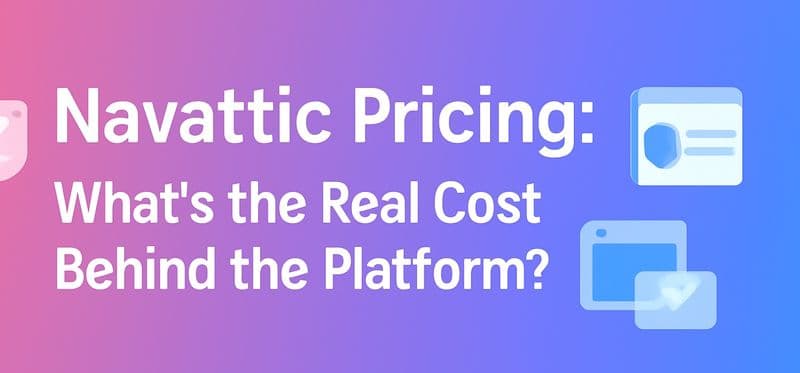Over the last ten years, tech improvements have changed nearly every part of how businesses work. It includes the way companies show off and sell what they're offering. Rather than just using long talks, companies now use interactive demo software to showcase their products.
These tools connect what the company sells with what customers might want in a fun and deep way. In simple words, these tools are not just extra bits. By using product demo software, potential customers can experience a hands-on and interactive preview of the product, allowing them to explore its capabilities and features at their convenience.
This blog post explores interactive demo software and shares twelve top tools you should check out.
What is Interactive Demo Software?
An interactive demo software is a hands-on experience that allows users to actively engage with a product rather than just passively viewing it. With interactive demos, users can click, explore, and test various features of a product in real time, providing a deeper understanding of how it works. This type of demo often simulates the product’s actual environment, enabling potential customers to get a feel for the functionality and benefits firsthand.
In essence, demo software lets you or anyone interested:
See and try out a digital version of the product.
Do more than just look at pictures or read about it.
You get to see how it works in real time.
Understand what's so special about the product and why it's worth checking out.
This kind of tool also makes it easier for people to see what they're thinking of buying and helps them get a good feel for it before they decide.
What are the Types of Interactive Demo Software Tools?
Different types of interactive demo software are out there based on what your business needs and what your customers like. Below, we will check these types in detail so continue reading!
1. Video Demo Software
Video demo software really improves product presentation by making it lively and interesting. These tools do more than just record your screen. They come with cool options that let people make detailed and lively video demos, perfect for sharing on social media.
They also use smart tech to help make your videos easy to search. This way, shoppers can easily find the bits of the video they're most interested in.
KeyFeatures of Video Demo Software:
Turning everyday language into searchable terms
Being able to reply to specific questions from viewers
The power to show videos made just for you
2. Product Tour Software
Product tour software is now among the biggest groups of interactive demo tools. These platforms use a browser extension to grab the front code of your product. These tools let you add links and change text even after taking a screenshot. It also allows for full personalization of the demo, making it more lively and engaging than just a simple picture.
Tools like SmartCue are really good at this. They let marketers and business development representatives create detailed product tours and walkthroughs, which can be a great addition to the copy on product pages and landing pages.
Key Features of Product Tour Software:
Can take detailed screenshots
Detailed ways to move through
It makes linking and space for editing text easier
3. Live Demonstration Software
Live demo software allows salespeople and tech experts to show real, ready-to-use versions of their products during sales presentations.
Products like TestBox and Saleo are perfect for medium-sized and big companies.
Key Features of Live Demonstration Software:
Provides versions of products that come with live, pre-setup data.
Made to handle and use demo settings again.
It lets you change data and features for each buyer.
4. Sandbox and Proof of Concept Software
Sandbox and proof of concept software tools really change the game in the world of interactive demos. They help make working models and demos that let potential customers try the product hands-on. Tools like TestBox and Demostack are part of this group. They are perfect for companies where trying things out is a big deal in making sales.
A key part of this group is that it lets people try out a real or copied form of what you're selling before they buy it. This works really well for bigger businesses that have many different products. These tools help potential customers understand everything your product can do.
Key Points of Sandbox and Trial Software:
Makes working test sites and demos
Helps leads try it out themselves
Keeps your demo product up to date
12 Must-Try Interactive Demo Software Tools
There is a lot of interactive demo software out there. Each one has its own special features meant to meet various requirements. In the next few parts, we will look at twelve interactive demo software tools you should try.
1. SmartCue
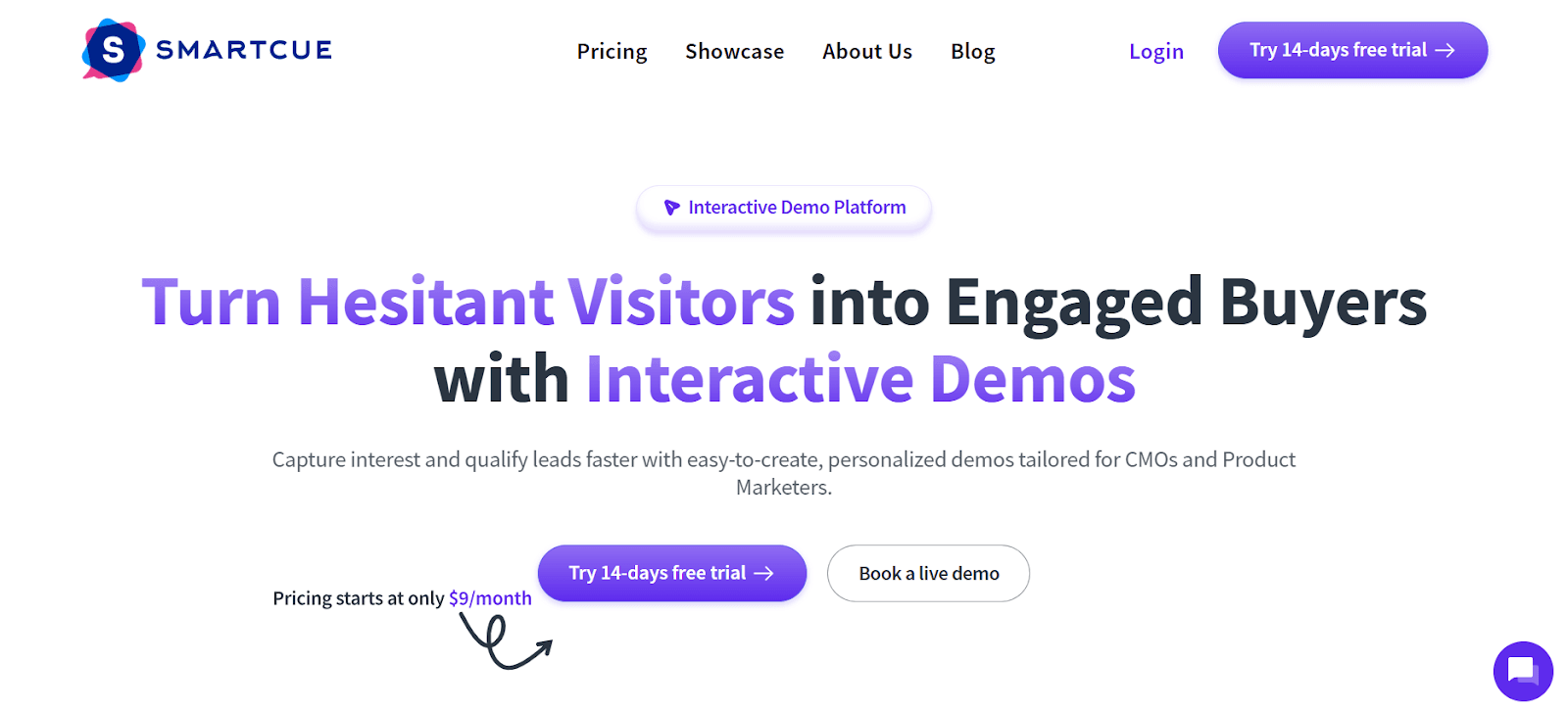
SmartCue is interactive demo software that allows users to create complex product tours in minutes without the need for any coding skills. You can create demo paths that look like real user journeys, which guide people through the key features of your product.
Here’s why SmartCue is a special pick for creating demos:
Easy-to-use demo editor
Admins can manage user access and share links with view-only.
Intuitive dashboard for creating showcases and tracking demo analytics.
It offers a Chrome extension that captures your steps and creates automated texts.
Why use SmartCue?
SmartCue offers the flexibility to edit each step of your demo by recording the screen.
SmartCue stands out from other demo software because of various reasons:
Repurpose videos into PDFs, GIFs or other formats.
Users can embed links on their web pages or create password-protected videos to share with leads.
Offers detailed insights and metrics such as time spent, drop-off rates, views, impressions & much more to gain insight into buyer behavior.
It integrates with various third-party tools such as HubSpot, Salesforce, MS Teams, and more.
Who can use SmartCue?
SmartCue is best for business owners, solopreneurs, or product marketing teams who wish to create quick interactive demos. SmartCue’s intuitive interface makes it a perfect choice, even for newbies.
Wondering how SmartCue helps in making engaging demos?
To make an engaging demo, start by picking the main features and perks to show off.
Then, pick software like SmartCue to make cool graphics and moving parts.
Add things users can click on, like buttons and hotspots, to help them move around the demo.
Before wrapping up, have a group of people try it out. Use their input to fix anything that needs tweaking and ensure the end result looks great.
Start with the 14-day free trial and see how SmartCue works.
2. Walnut

Walnut changes up how we do product demos. It lets teams create, tweak, and grow amazing product showcases without needing to code. A cool thing about Walnut is how it uses AI to speed up making product tours.
Why use Walnut?
Walnut is different from the usual demo software.
Here’s why you should consider Walnut:
It lets you grab your product's look and feel by copying its front-end code. This way, it shows off your product more like real life, unlike a simple screenshot.
Walnut really lets you do cool things after taking a picture of your screen. You can add links and change text.
This platform helps developers, marketers, and salespeople. It offers dynamic product demos that look a lot like the real product setting.
It also lets you create forms to get leads and deep insights, allowing you to control whether to restrict or allow free access to tours.
Overall, with its personalization capabilities, sales reps can create product stories that focus on specific use cases, showcasing graphs tailored to the audience or industries.
Walnut also supports analytics, enabling users to track the performance of their demos and optimize them based on the data collected.
In addition, Walnut offers guided demos through annotations, making it easy for prospects to navigate through the demo.
Also Read: Walnut vs Demodesk vs SmartCue
3. Navattic
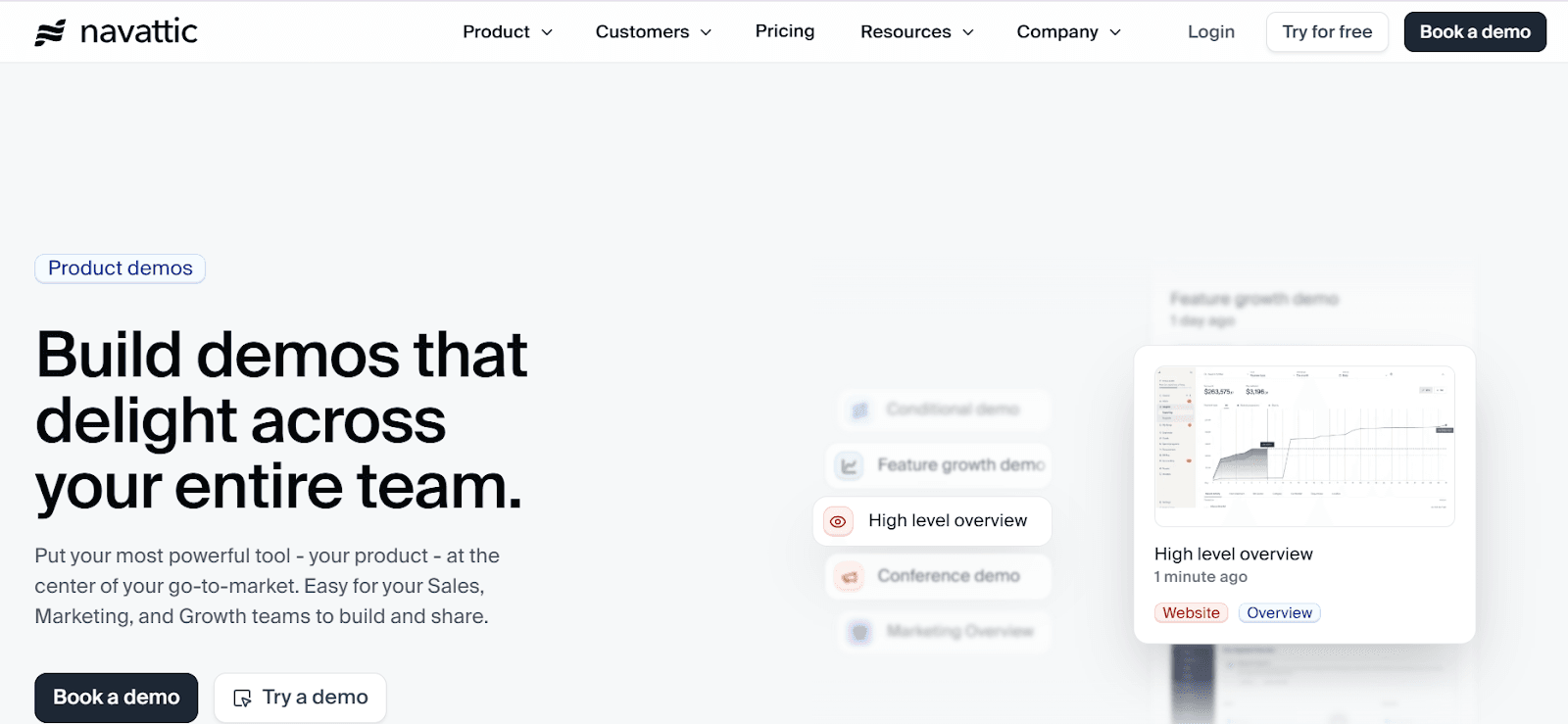
Navattic provides a simple tool for sales and marketing. This tool helps them create and share interactive demos of their products and services. This flexibility means teams can choose the right time to ask for customer information.
Why use Navattic?
Just like with Walnut, Navattic lets you take screenshots of your product's website code.
Here’s why you should consider Navattic:
With these screenshots, you can use a simple no-code editor to build easy-to-follow guides.
These guides link different parts of your product, making it really stand out. Navattic lets everyone on your team help make these demos without needing to know a lot of tech stuff.
This means you can rely less on IT people.
4. Reprise

Reprise shines in the world of demo software because it offers a wide range of options for every step of the presales buying process.
Why Use Reprise?
Reprise Replay works a lot like Walnut and Navattic, helping you build product tours.
Here’s why you should use Reprise:
What makes Reprise special is its ability to capture all the important screens at once.
This tool is great because it copies the outside and inside code of your product.
It lets you share copies of your product that can do many things with potential customers after demo calls.
Then we have Reprise Reveal. It's cool because it uses a browser add-on to add data to your demo setup.
Reprise lets your salespeople show real-life data in their demos. Reprise is more than just a simple tool.
It's a platform that lets companies create demos tailored to their customers.
5. Consensus
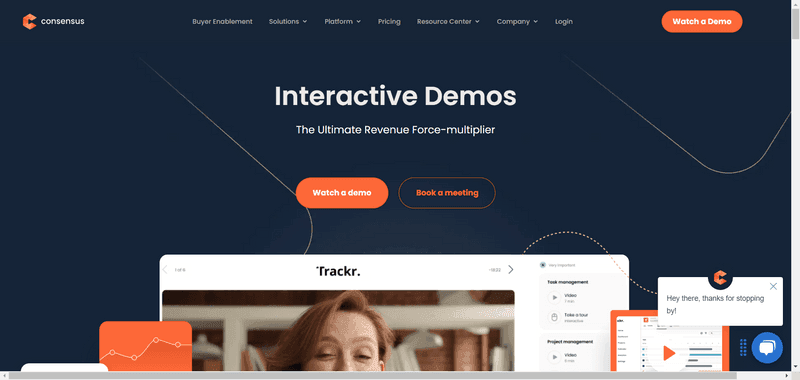
Consensus changes how video demo software works by including a layer that responds to user inputs. Teams can make custom video guides by joining various video parts, which depend on a prospect's answers to some questions.
You start by giving them a quiz about their job. Based on their answers, you show them videos meant just for them. After they watch these videos, you can ask more questions, this time about what specific features of the product they like. This helps them see only the parts of the demo that matter to them.
Why use Consensus?
As mentioned, Consensus works uniquely. There’s a lot more about this tool.
Here’s why you should consider Consensus:
One cool thing about Consensus is the "Buyer Board."
It lets the person supporting your product at the customer's company check who else has watched the demo and how they engaged with it.
Consensus turns regular video shows into something more interactive and fun.
It's really shaking up the way video demos are done, making it a valuable tool for sales outreach.
6. Storylane
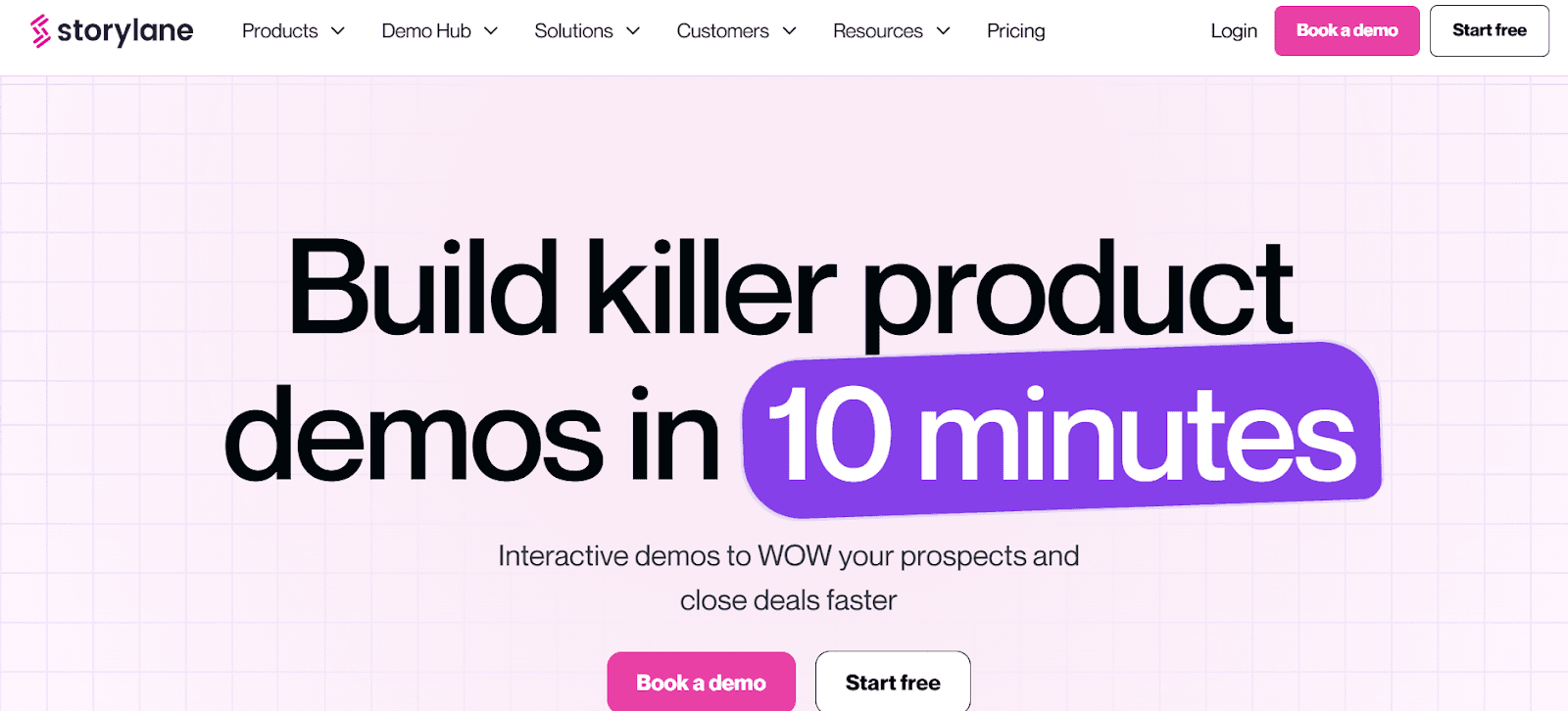
Storylane provides a product tour tool that doesn't require any coding and is easy on the wallet. It's great at saving time, as it can grab all the screens you need for your tour using application capture. This means you don't have to get screens one at a time, and you spend less time making new tours.
Why use Storylane?
Storylane’s unique features are many.
Here’s why Storylane is a nice choice:
The special thing about Storylane is its teamwork platform. It lets groups and solo users work together on making tours.
This makes the demo-making quicker and makes sure everyone's ideas are added to the demos well.
Storylane is the perfect tool for creating interactive product demos, allowing marketers to showcase their products in an engaging and personalized way.
It also offers a teamwork platform, making it easier for teams to collaborate and create high-quality demos efficiently.
7. Demostack

Demostack has a tool for creating very interactive demos. It's different from many others because it captures not just the look but also the workings behind your product. This means cool things like filters, reports, and dropdowns will work just like they do in real life.
Why use Demostack?
The special features that Demostack has make it a better tool for sales than marketing efforts.
Here’s why you should pick Demostack:
Salespeople can copy their demo setup, customize it, and then share the copy with potential customers as something to look at after a live presentation.
Therefore, Demostack efficiently closes the space between marketing talk and true product usefulness, speeding up the business sales cycle.
Additionally, Demostack offers effortless demo creation, simplifying the process for teams and allowing them to focus on their core tasks rather than technicalities.
Also Read: Demodesk vs. Demostack vs SmartCue
8. Saleo
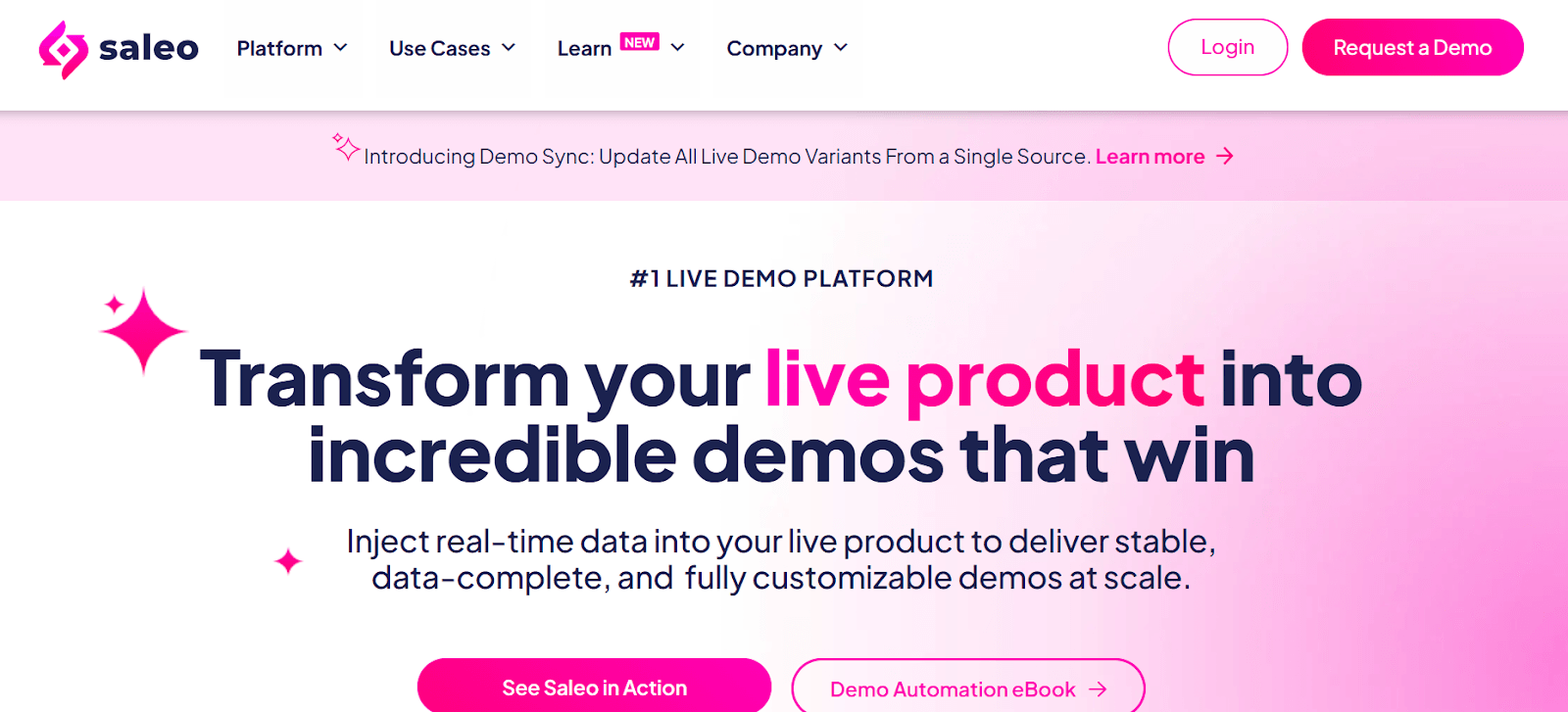
Saleo became popular in the online demo software world by focusing on making live demos more personal. The tool uses a part that was added to your web browser. This lets you change your current demo information to showcase your product to potential customers better.
Why use Saleo?
With Saleo, groups can create data sets that are just right for many different needs and areas.
Here’s why you should try Saleo:
When you pick the data set you want, Saleo will show it in your demo.
Teams can also switch any shown data during the demo without messing up the main data set.
This means salespeople and engineers don't have to spend time fixing up the demo space before they show it off.
9. Arcade
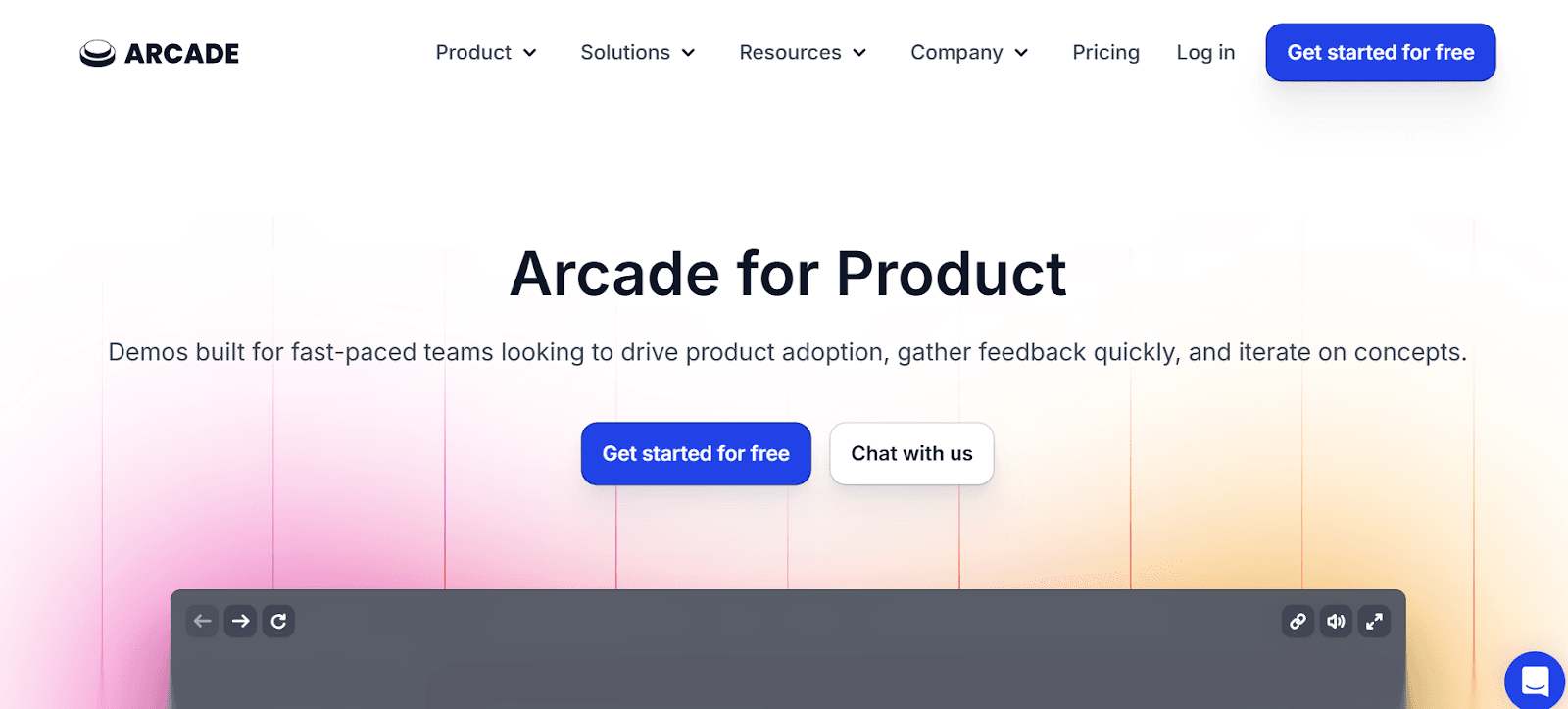
Arcade provides a good solution for people who need simple tools for demo software. You can film your face and what's on your screen to better show potential customers your product. This makes your presentation friendlier and more interesting.
Why use Arcade?
Even though Arcade doesn't have all the fancy features, it is a great choice for beginners in interactive demos.
Here’s why you should consider Arcade:
It's affordable, so it's easy for folks to try out and show why spending money on demo software is worth it before moving to something with more options.
Teams, especially marketing teams, can begin by putting together basic demos and then think about adding more complex features offered in the pricier plans.
10. Supademo
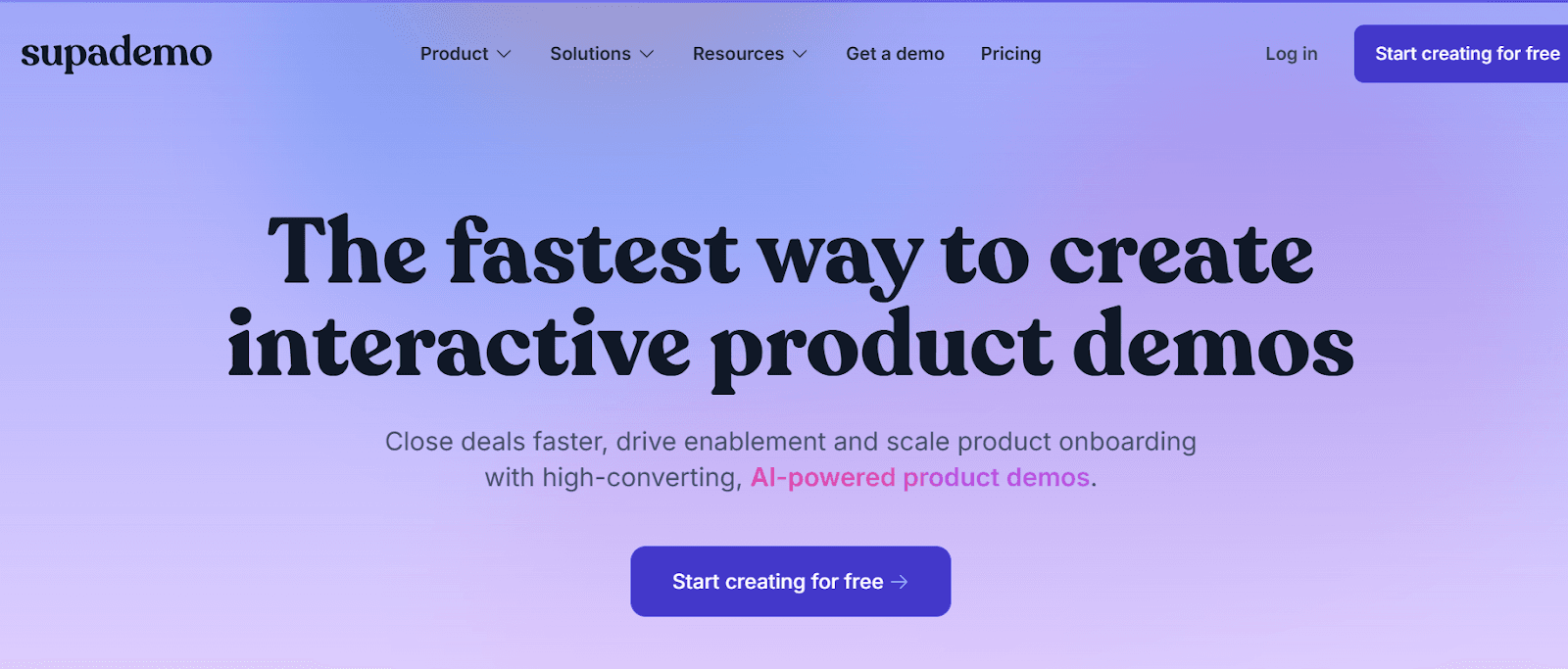
Supademo is on the list of best demo software because it's easy to use yet very effective. It's designed for sales groups and mixes pictures and simple text instructions to show people around your product.
Why use Supademo?
What makes Supademo special is how well it blends AI into the system. This helps speed up the process of creating content for product tours.
Here are all the reasons that make Supademo a wonderful product to choose from:
Making a copy for a product tour usually takes a lot of time, but Supademo speeds this up by helping you create good content for your tours with AI.
Another great thing is its checklists. They let customers shape their demo experience based on the features they care about the most.
11. TestBox

TestBox features both a live demonstration and Sandbox/POC software. It lets teams show off their products in real time and share demos with potential customers, all with one tool.
Why use TestBox?
What makes TestBox stand out is how it links directly to the live details of your product. It shows off all the features with the latest updates. You get customized demo settings ready to go with real-life, simple data that doesn't include personal details.
Here’s why you must try your hands on TestBox:
With TestBox's analysis features, you can look into who's watching and how they interact.
This helps in making tailored emails or messages afterward.
With what TestBox offers, groups can make custom demos and trial runs for each interested person and have all the detailed analysis they need in their personalized demo environment.
12. Folio
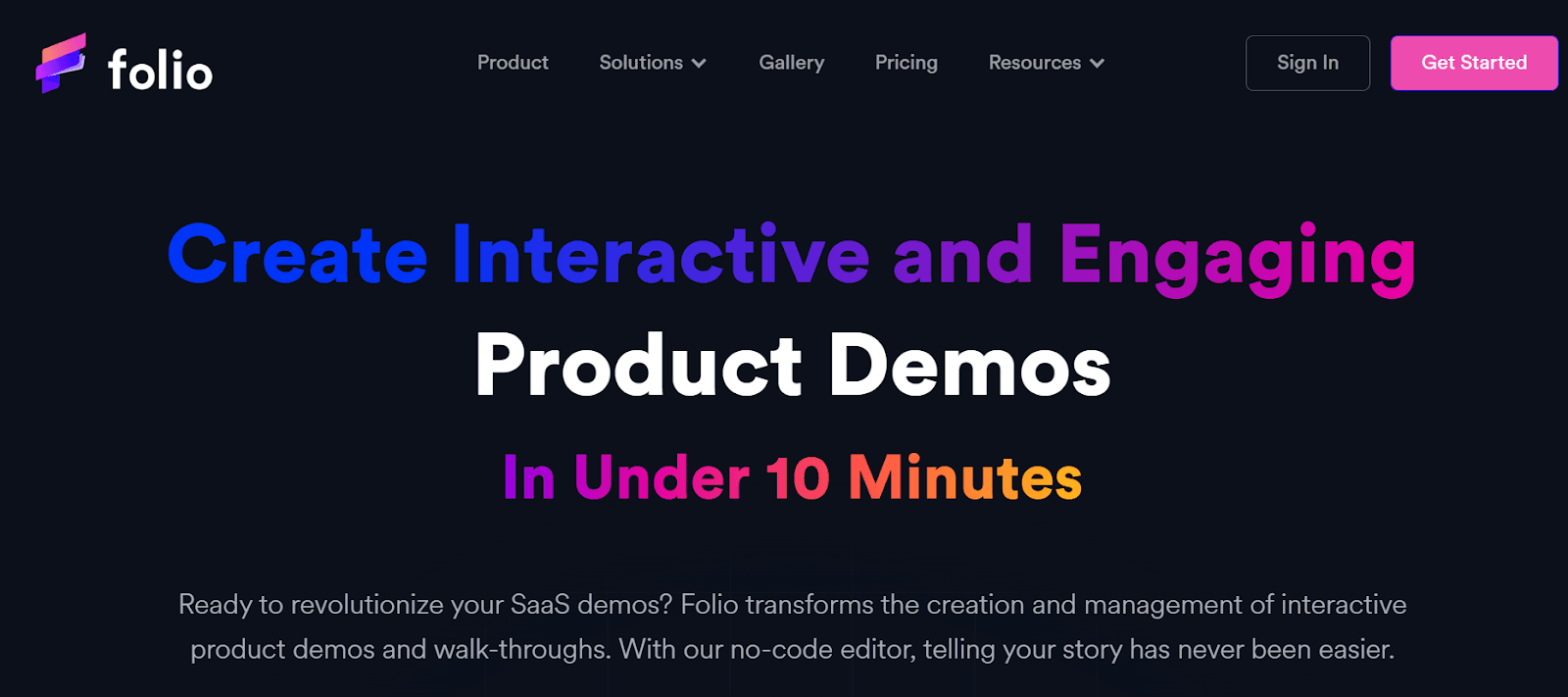
Folio is a great tool for interactive demo software. It combines the best of live demos and product tour software, allowing teams to build full product tours that show off how their software works in real time.
Why use Folio?
Folio uses a browser tool to catch what your product does as it happens.
Here’s you should check out Folio:
When making your tour, Folio lets you add things like links, text edits and changes to information after taking a screenshot.
The result is a detailed tour that skillfully takes the user through the product. They get to see and use all its features themselves.
This platform is really helpful for big companies that need a flexible tool. It can show everything live or through recorded tours.
Conclusion
Interactive demo software has really changed how businesses show off their products. Now, customers can try out a product before they decide to buy it. There are different tools for different needs, including live sales teams demos, tours of the product through software, video demos to try things out in a sandbox, and even software that shows how the product works.
When it comes to things like showing off product features in detail, explaining why a product is worthwhile to stakeholders, speeding up the sales process, or getting more people to make a purchase, using demo software that lets you interact can really help in attracting potential customers and ultimately grow a business.
However, it's really important to know what your business needs and pick the software that matches what your customers want. So choose wisely and use the full potential of the interactive demo software now!
Frequently Asked Questions
What is the difference between live demonstration software and video demo software?
While both types of software show what a product can do, the big difference between them is how much they let you participate. The first kind, mostly used by account execs and sales engineers, lets you interact with potential customers as things happen. On the other hand, the second kind usually shows a set of pre-recorded videos; you can't do much with them.
Can I integrate the demo software with my existing CRM or marketing tools?
Many demo programs can easily work together with the CRM or marketing tools you're already using. This helps make your work process smoother. It also improves your ability to build strong connections with customers by offering custom solutions and quick responses. Plus, it ensures that the data is correct and matches up across different systems.
Is it possible to track the performance of my product demos?
Most hands-on demo software definitely has analytics and reports tools. These tools give key information on how viewers act. They track things like how much viewers are involved, where they stop watching, and how often they click. With this information, businesses can improve their efforts to get users interested.
Are there any free or low-cost demo software options available?
Yes. Platforms like SmartCue and Storylane are good options for teams just beginning to use interactive demo software because they don't cost a lot. Also, companies like Reprise, Walnut, Navattic, and more often have different price levels to match various business requirements and how much money they can spend.
What are the benefits of interactive demos?
Interactive demos are great for businesses. They let people see and try products, showing off the product's features, perks, and how to use it. This hands-on approach grabs people's attention and helps them understand better. This means people are more likely to remember and buy the product. Plus, these demos help businesses collect and check data, making it easier to tailor products to what customers need.

